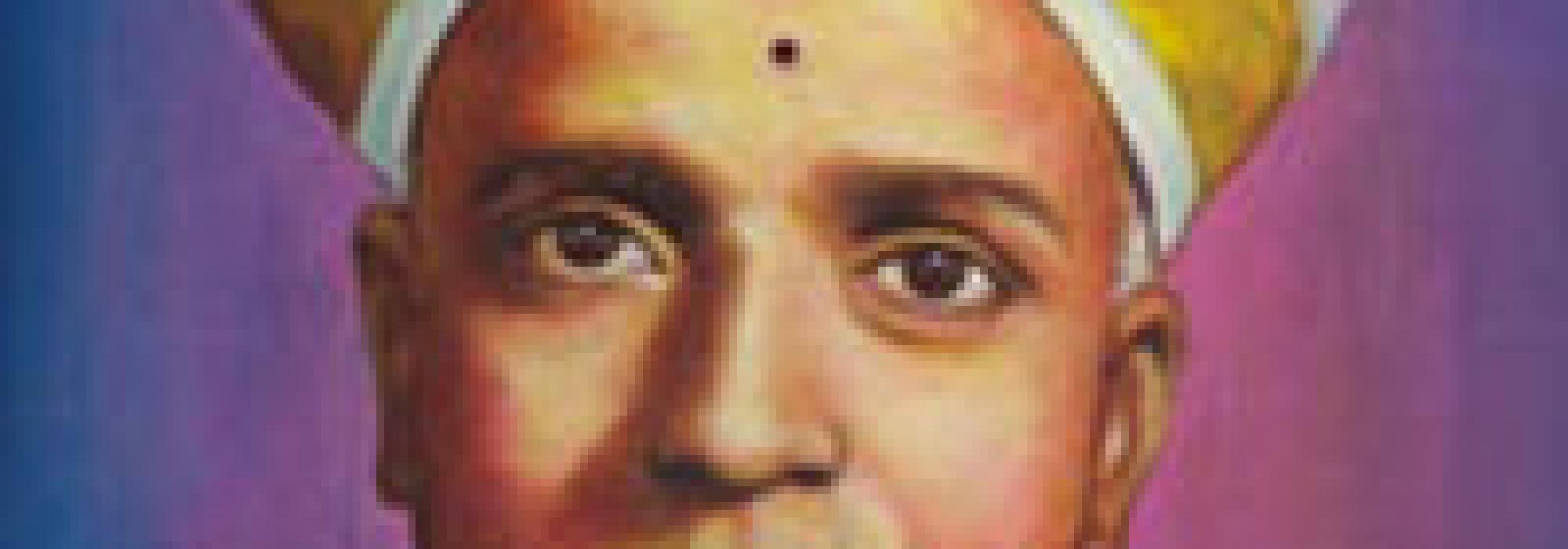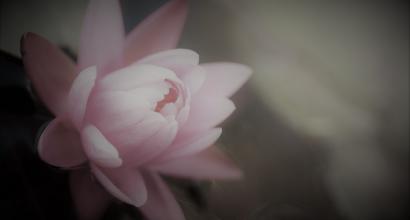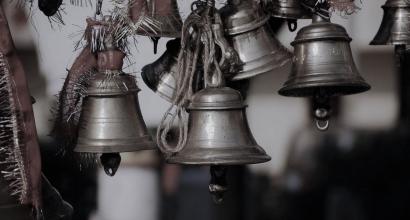AR Krishnasastri (popularly written as A R Krishna Shastry) was a scholar by his very birth. His father, Ambale Ramakrishna Shastry was the head professor of Grammar in the Samskṛta Pāṭhaśālā in Mysore. In addition to Sanskrit grammar, he was well versed in Jyotiṣa and Ayurveda too. Scholarship, therefore, flowed in Krishnasastri's veins.
Krishnasastri lost his mother at a young age and this probably was one of the reasons for him to develop a tender heart full of empathy. Krishnasastri lent out a helping hand for many. He always had a soft corner for the needy.
He had great affection for his brother. Krishnasastri often recalled that his mother passed away leaving his infant brother behind.
As I try speaking about Krishnasastri, a question comes up before me – What was Krishnasastri primarily? A scholar? A connoisseur? A wonderful family man? An efficient worker?
Krishnasastri’s early education was under his father’s tutelage and it was primarily Sanskrit education in the traditional pattern. He later joined English college and under the influence of B. M. Srikantiah, he developed taste for Kannada language. Krishnasastri spoke about his love for the Kannada language while delivering the presidential address at the Sahitya Sammelana in Hyderabad. He has also written about the topic in the magazines published by the Kannada Sahitya Parishat. He says that Sanskrit does not need special and dedicated safeguarding. Countries around the world have respect for the Sanskrit language. The English, German, French, and Americans have come forward to work for the prosperity of Sanskrit. Kannada lacks such nourishment. It is only in the hands of the Kannadigas to nourish their own language. If they display lack of interest in their own mother tongue, there is no one else to stand for the language – these were the thoughts Krishnasastri often had. These thoughts resulted in his active service towards Kannada literature and his work for the Kannada Sangha.
Krishnasastri was a traditionalist and a noble soul. He had great devotion in activities connected with the daily rituals, worship of deities and the reading of scriptures. He lent a generous hand to good deeds that caught his sight and also to social welfare organisations.
Charity Without Clamour
There was once a certain event scheduled in the Gokhale Institute of Public Affairs in Bangalore. Krishnasastri too attended the program like everyone else. There were several women and children gathered there that day. There was sweet boondi (a kind of sweetmeat] arranged for them all. Krishnasastri asked one of the staff of the Institute about the expenses incurred in making the sweets available (It was not me who he asked). Soon after hearing his reply, Krishnasastri went home, brought a cheque of Rs. 80/- and handed it over to the staff. The readers should take note of the discreet manner in which he did the job and not the other peripheral aspects.
Prof. M. Hiriyanna was one other stalwart who helped many in private and was always discreet about his charity. He had helped several students and scholars in the form of monthly instalments. This was done in a confidential manner and the recipients of help were not supposed to spill beans anywhere, anytime!
I know of a student who studied Sanskrit. After his studies, he procured a good job and earned well. When he was a student, one of his classmates had shared his difficulties with him. This man suggested that he take the help of Prof. M. Hiriyanna. Accordingly, the other one requested Hiriyanna for some favour and received it the next moment. What transpired next is to noteworthy. The student I know went to thank Hiriyanna for helping his friend. He had another ten months to go before he finished his studies in the college. He would finish his MA exams in ten months. To his surprise, Hiriyanna had bundle ready with him, that contained instalments for the next ten months. He gave the packet containing the money to the student and said
“You need not come here again.”
The student was taken aback and did not know what to say. Noticing this, Hiriyanna asked –
“I had requested you not to speak about this to anyone else. Have you kept up your word.”
“No. I happened to tell this to Mr. …”
“That is good. Now, please do not tell anyone else about what I just did.”
Hiriyanna helped students studying Sanskrit in Sringeri and Kaladi. This was all done in great secrecy.
Krishnasastri too was of a similar nature.
Harsh Outside and Gentle Inside
Venkatanaranappa and Krishnasastri did not agree on several things. Their friendship was not a great one. However, the two had several similar characteristics and resembled each other in many aspects. Both were disciplined, honest, and noble. Both were harsh from the outside and gentle within.
We see a variety of flowers in nature. The Ketaki flower is longer than it is wide, but is full of thorns. The rose has several curls and is circular in shape, but is full of thorns as well. Embracing the Ketaki flower will only cause us pain. The rose, on the other hand, is as soft as a baby’s lips. Ketaki is good to look at. The rose comes in a few different colours but dries up, losing it charm quickly. A Ketaki lives for at least ten days without losing its fragrance. A rose cannot survive even for an hour. Some people like Ketaki, some like the rose. There are a few who like both!
Venkannayya and A R Krishnasastri
Venkannayya and Krishnasastri were poles apart by nature. Venkannayya was lean and tall. Krishnasastri was not that lean nor was he plump. He was not as tall as Venkannayya. The Iruvantige flower (belongs to the Jasmine family) has its buds that are lean and long like sticks. Its tips are sharp but don’t hurt anyone who touches them. A pestle does not have sharp edges; its ends are smooth and rounded. However, anyone who gets hit by a pestle will need time to recover from the impact!
Venkannayya was lenient and lax by nature, Krishnasastri was a disciplinarian. Kāvya (creative literature) was closer to Venkannayya’s heart than Śāstra (science). However, the two were equally liked by Krishnasastri. One can even say that he liked Śāstra a tinge better than Kāvya. Krishnasastri belonged to a family that strictly adhered to Vedic customs. That was the nature of his entire family. His father Ramakrishna Shastry taught his eldest son, Krishnasastri, the Aṣṭādhyāyī from a young age. The son had great reverence to the tradition all his life. Even when he worked at the Oriental Library and was employed at the college, he went to study Vedanta and other śāstras in the Samskṛta-mahāpāṭhaśālā. He wore traditional attire like the rest of the students who went there.
First Job
A R Krishnasastri was first employed at the Deputy Commissioner’s Office in Mysore. There he learnt keeping and managing records. He had to arrange and keep track of the records which had labels such as “From – To” written on them. He learnt this art from there and practised it throughout his life. This was an outstanding virtue in him. He was disciplined in writing down documents and keeping record of all the activities. He shared these attributes with Venkatanaranappa too; these were, however, totally absent in Venkannayya.
Later, Krishnasastri took up a job in the College. He got transferred to the Oriental Library thereafter. There does not seem to be any other instance which brought him such bitterness as the job in the Oriental Library. What he was required to do there was not about critically examining books or procuring new ones. He had no contact with any scholars or scholarly works. He was assigned ‘Dispatch Duties’ – a clerical job that required him to pack books, weigh them, calculate the postal expenses, and answer the questions raised by the customers there. In addition to this, he had to keep track of the books that had come back after rejection. He had to maintain a stock of twine threads and a pair of scissors. He always had to have his hand dipped in a packet of glue. Such was the plight of Krishnasastri. I, at several instances, had felt sorry looking at him in this state. The government is known for using a silken garment for dusting things and a useless piece of cardboard in the place of a handkerchief. When Krishnasastri was working for the Oriental Library, one of the higher officials there was Mahāmahopādhyāya Dr. R. Shamashastry, the expert in Arthaśāstra. Shamashastry was a great scholar and a researcher. He had respect for scholarship. He seemed to be helpless too! The work had to go on. He had to distribute tasks among the available employees. He, thus, ended up using the silken cloth for packaging charcoal.
Teaching Method
Once Krishnasastri was transferred back to the teaching job, he felt extremely contended – he felt he was at home in a job that suited his nature. He had great enthusiasm in teaching students, correcting their mistakes, in explaining the intricacies of literature and grammar. Even if he had other pressing duties to execute, he never missed a class or compromised on his disciplined life.
I have heard that Krishnasastri’s teaching kindled interest and curiosity in the students. He would bring parallels from English and Sanskrit literature as relevant to the context. He would also relate his teaching to the current affairs, which made his classes engaging.
To be continued.
This is the first part of a two-part English translation of the twenty-fifth chapter of D V Gundappa’s Jnapakachitrashaale (Volume 3) – Sahityopasakaru. Edited by Hari Ravikumar.











































